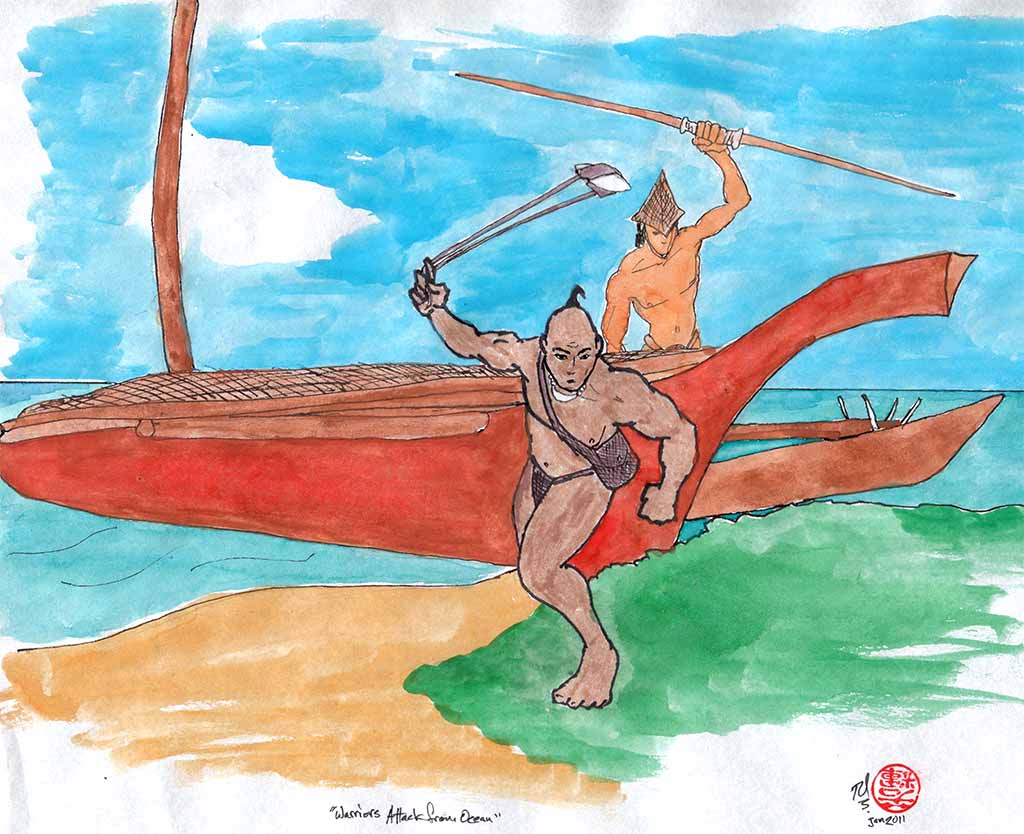
Homage to Chief Hurao
Matatnga is defined as “strong personality or fearless.” Chief Hurao, a Chamorro/CHamoru leader during the Spanish-Chamorro wars in the late 1600s, was the living embodiment of the word. Matatnga is a specific form of courage. Someone with matatnga stands up for himself or herself with a certain fierce determination.
Examples of matatnga can be seen today. Despite the socio-cultural upheaval in the Marianas due to colonialism, Thomas McGrath argues that:
Throughout these years of change a persistent substratum remained with some modifications focusing on food sharing, language, kinship, politics, patriotism, and reverence for the dead.
The concept of matatnga is an important aspect of these persistent Chamorro core values. Across the turbulent course of three centuries of antagonistic interaction with Western powers, Chamorros have never lost a characteristic fundamental to them, that of being matatnga.
Chief Hurao is an appropriate symbol of matatnga because of his role as a leader, fighting for the Chamorro way of life. Chief Hurao survived the first two battles of 1671, the first as a prisoner of the Spanish, the second as the leader of a thirteen day siege. He lived to fight again that same year and then died in battle. He fought against oppressors who threatened several freedoms: cultural, religious and political.
By Vincent P. Diego, PhD
For further reading
McGrath, Thomas B. “Change and Persistence Among the People of Guam.” Journal de la Société des Océanistes 40, no. 79 (1984): 257-264.
Perez-Howard, C. “Thoughts and Confession of a Chamorro Advocate.” Hale’-ta- Hinasso’; Tinige’ Put Chamorro: Insights; The Chamorro Perspective. Hagåtña: Political Status Education Coordination Commission, 1993.
Sellman, James D. “Chamoru Social-Moral Philosophy.” Asian Culture 22, no. 5 (1994): 23-31.
